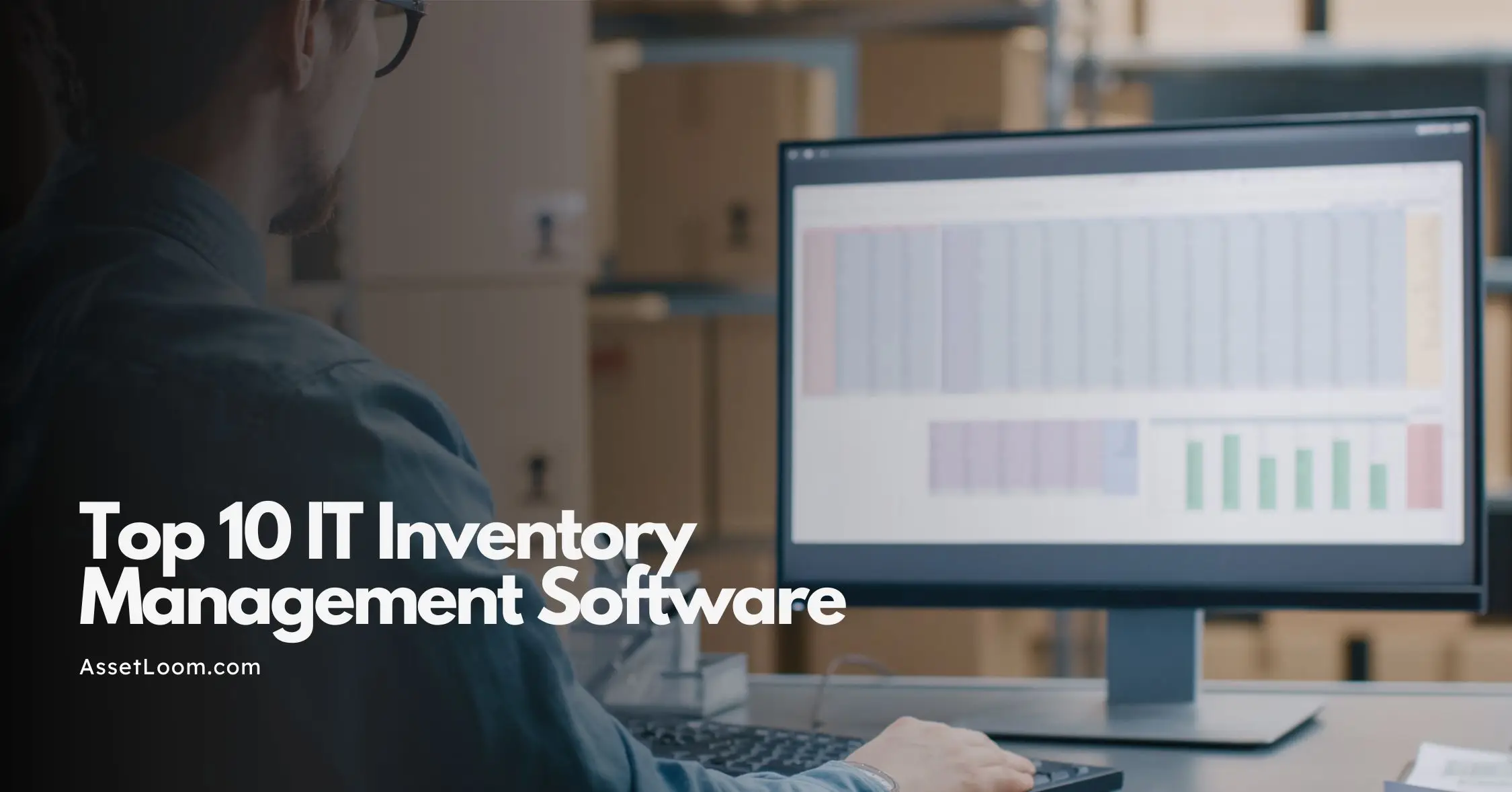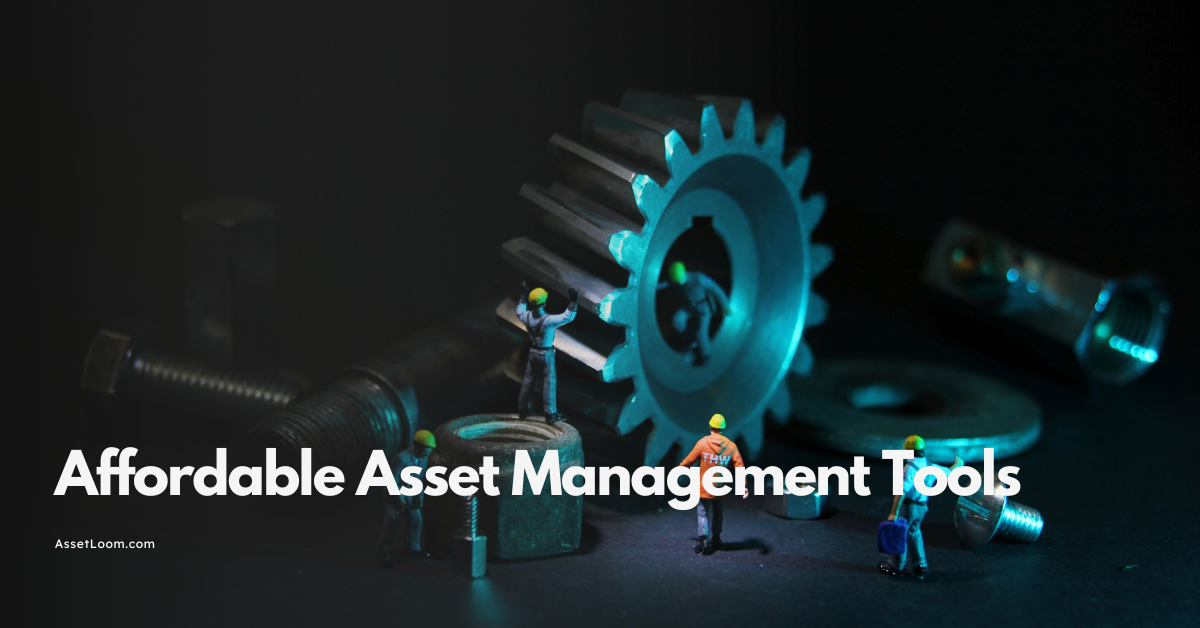Jamf Asset Management Review: Features, Benefits and Limitations
Jamf Asset Management is designed for Apple devices, with features, benefits, and limitations explained, plus how AssetLoom expands its capabilities.
Jamf Asset Management is a tool designed to help organizations manage Apple devices such as Macs, iPhones, iPads, and even Apple TVs. It is mainly used in workplaces, schools, and healthcare settings where Apple products are common.
The platform focuses on giving IT teams a single place to see all their Apple devices. Instead of manually checking each one, Jamf allows teams to track important details like device health, installed apps, and security status. It also supports remote actions, which means IT staff can update or configure devices without needing to physically handle them.
In short, Jamf Asset Management is a system that makes it easier to organize, monitor, and maintain Apple devices across an organization.
Key Features of Jamf Asset Management
Jamf provides a wide set of tools to help IT teams manage Apple devices more easily. Some of the main features include:
1. Inventory Tracking
One of the biggest advantages of Jamf is how it keeps track of Apple devices through its IT inventory tracking software. Instead of maintaining spreadsheets or relying on manual checks, IT teams can see all device details in one place. This includes things like the device model, operating system version, battery health, installed apps, and security status.
Having this level of visibility makes it easier to spot problems early. For example, IT staff can quickly find out which Macs are running old software that needs updating, or which iPads have weak batteries and may need replacement soon. This not only saves time but also helps with planning budgets and keeping devices in good working order.
2. Dashboard and Reporting
Jamf provides real-time dashboards that give IT teams a quick view of device health, updates, and policy compliance. Instead of digging through individual records, everything can be monitored from one screen.
The reporting tools make it easy to generate summaries on things like which devices need security patches, how many iPads are used in a certain department, or which apps are most common across the organization. These reports are useful for planning, budgeting, and making informed decisions without guesswork.
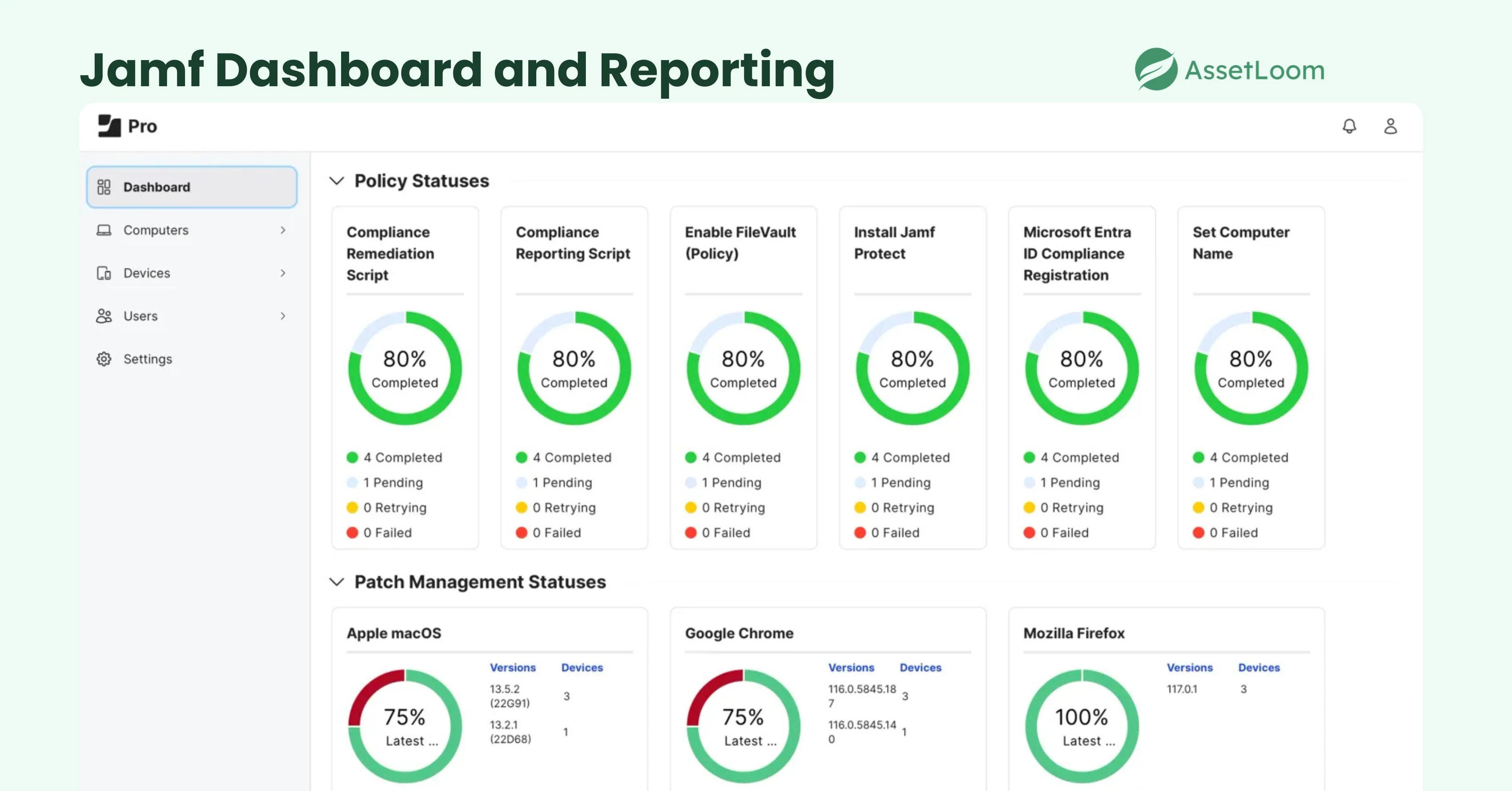
3. Zero-Touch Deployment
With Jamf, new Apple devices can be set up without IT staff needing to touch them first. Using Apple Business Manager or Apple School Manager, devices can be shipped straight to employees or students and arrive ready to use.
As soon as the device is turned on and connected to the internet, it automatically gets the right apps, settings, and security rules. This saves IT teams from having to manually configure each device, which is especially helpful when rolling out large numbers of Macs or iPads at once.
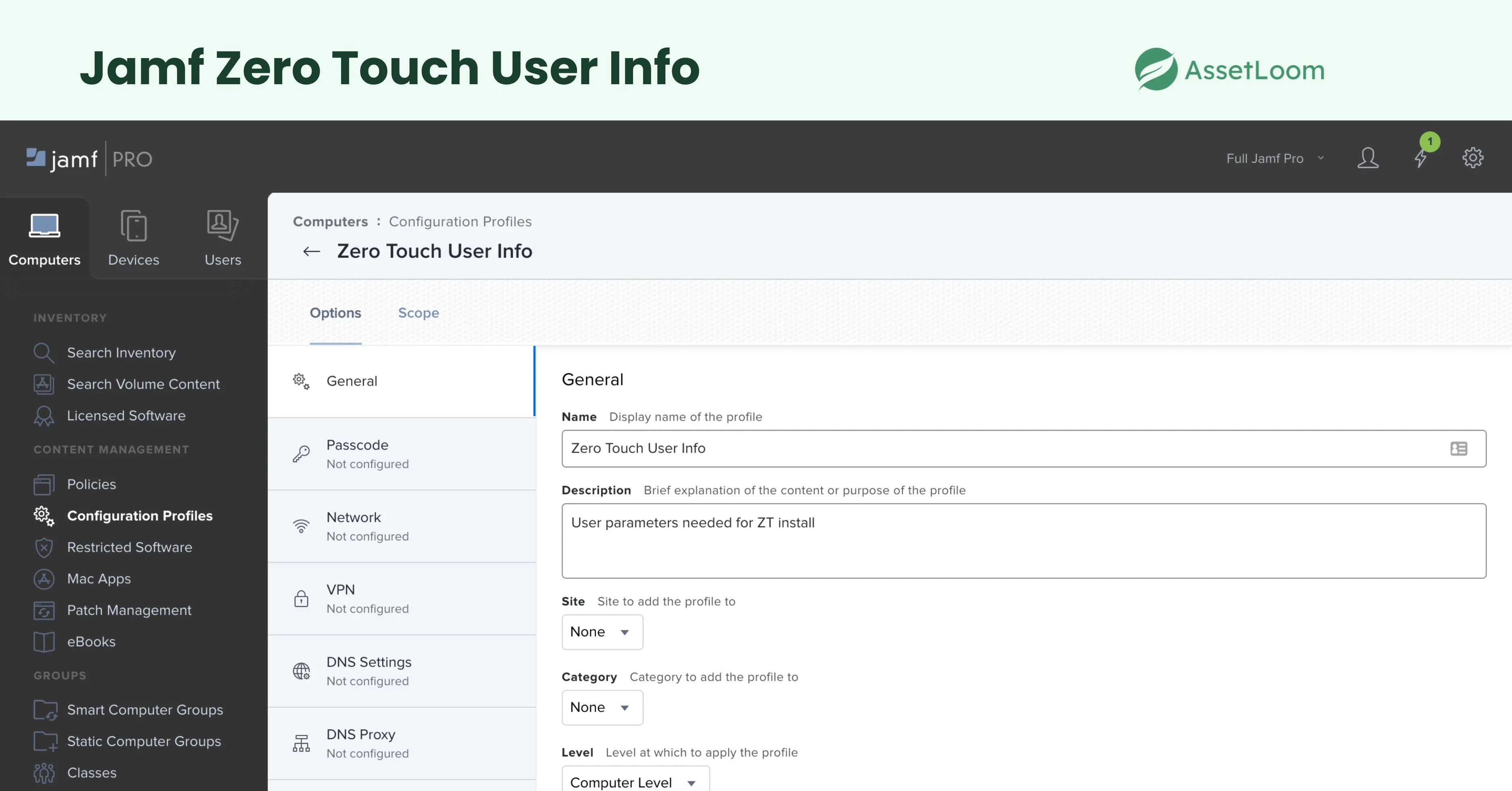
4. Patch and App Management
Keeping devices secure and up to date is one of the most important jobs for IT teams. Jamf makes this easier by allowing updates and apps to be pushed to many devices at the same time.
Instead of updating each Mac or iPad one by one, IT staff can install apps, roll out software patches, or remove outdated programs remotely. This ensures that users always have the latest versions and that security issues are fixed quickly. It also reduces downtime and helps prevent problems that come from using old or unpatched software.
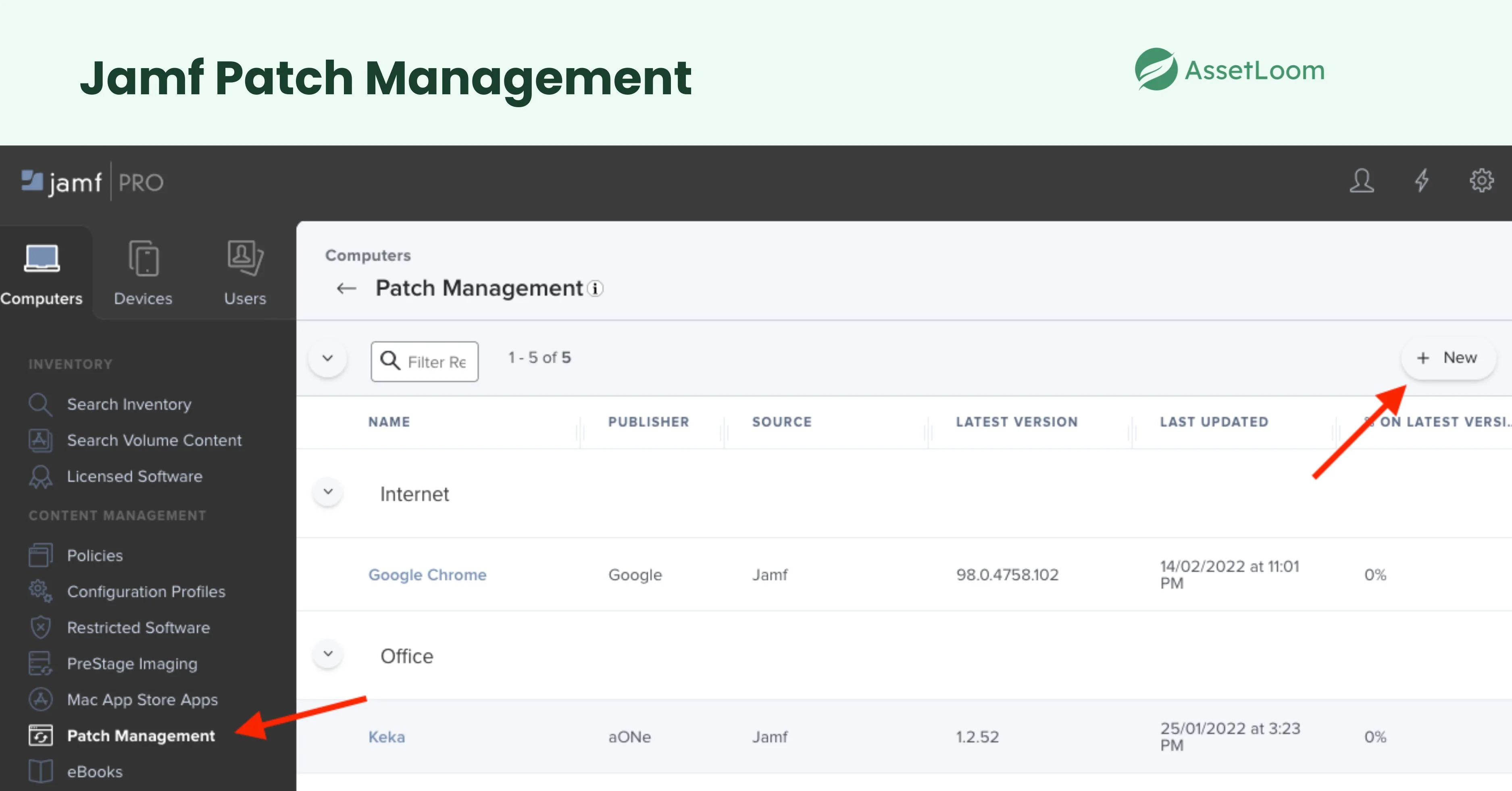
5. Self-Service Portal
Jamf includes a self-service portal that lets users install approved apps and access resources on their own. Instead of contacting IT for every small request, employees or students can download the tools they need directly from a pre-approved list.
This not only saves time for the IT team but also gives users more flexibility. For example, a student can quickly install an educational app, or an employee can get access to a work tool without waiting for IT support. It reduces routine helpdesk requests and makes the overall experience smoother for everyone.
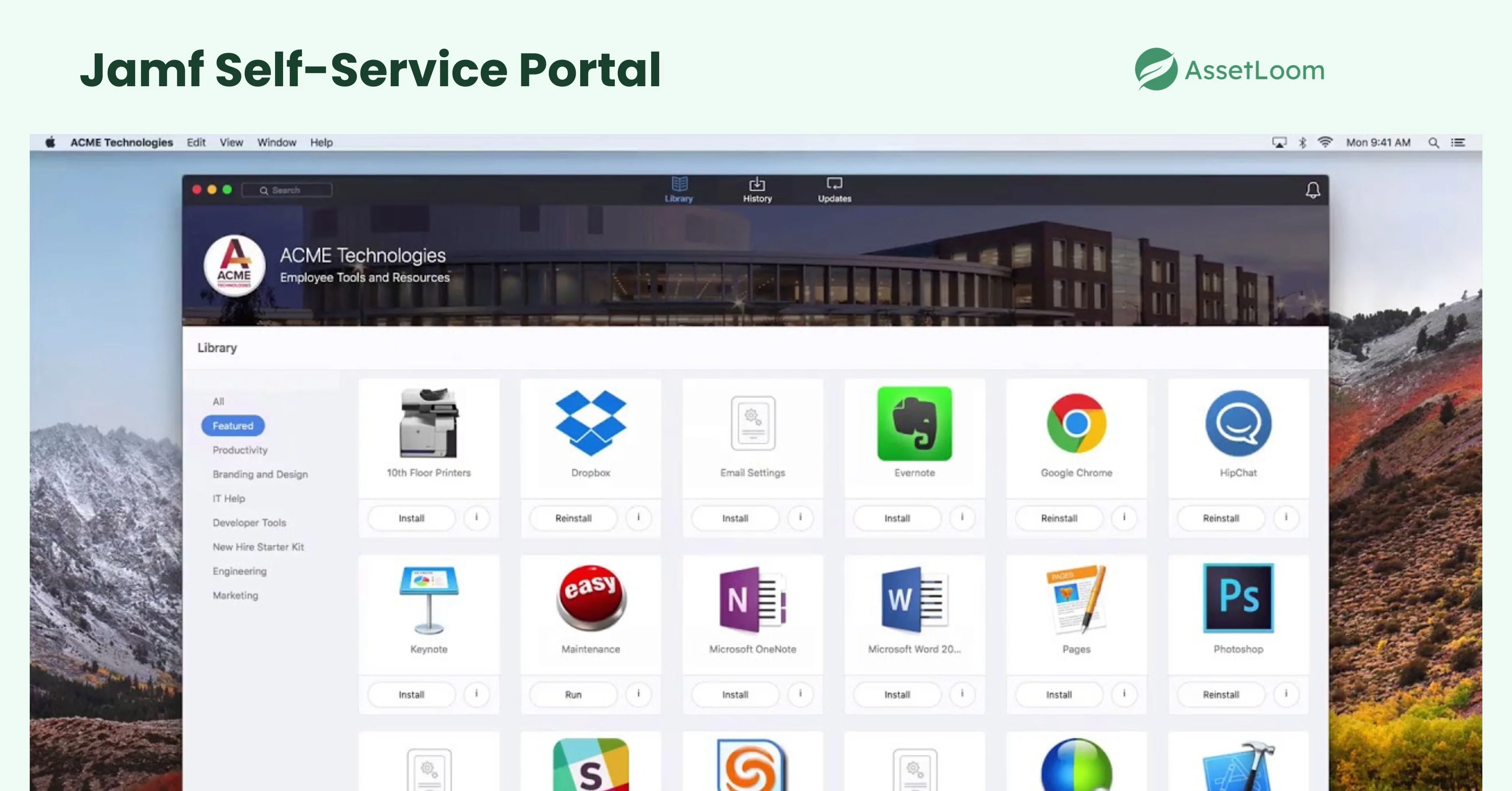
6. Security and Compliance
Jamf helps organizations make sure all Apple devices follow the right security rules. IT teams can require things like strong passwords, device encryption, or automatic screen locks. Jamf can also check for risks such as outdated software or jailbroken devices, which could put data at risk.
By enforcing these policies across all devices, Jamf makes it easier for organizations to stay compliant with security standards. This reduces the chance of data breaches and ensures that sensitive information is protected, whether the devices are used in the office, at home, or in schools.
7. Integrations
Jamf can connect with other popular IT tools, which makes it easier to fit into existing systems. For example, it works with identity providers like Okta, cloud platforms like AWS, and management tools such as Microsoft Intune, ServiceNow and AssetLoom.
These integrations allow IT teams to combine Jamf with the tools they already use, instead of having to manage everything separately. This creates a smoother workflow and helps organizations manage Apple devices alongside other parts of their IT environment.
Benefits of Jamf Asset Management
- Efficiency and Automation: Automates common IT tasks such as deployment, updates, and inventory tracking. This reduces manual work and lowers the number of support tickets, especially in large environments.
- Scalability: Works for both small teams and very large organizations. Jamf can handle a few hundred devices or scale up to manage tens of thousands. It also supports both cloud and on-premises setups.
- Strong Security and Compliance: Meets high security standards and holds certifications like ISO 27001 and SOC 2, helping organizations maintain regulatory compliance.
- Community and Support: Backed by Jamf Nation, a large community where IT staff share scripts, troubleshooting tips, and best practices. Professional support services are also available.
- User Experience Enhancement: Supports bring-your-own-device (BYOD) setups by keeping work and personal data separate. The self-service portal also gives users more independence in installing apps and accessing resources.
- Integration for Broader Visibility: Can be connected with other ITAM tools to give organizations a more complete view of their assets and improve overall compliance management.
Limitations of Jamf Asset Management
Apple-Only Focus
Jamf is built specifically for Apple devices. While this makes it very strong in managing Macs, iPads, iPhones, and Apple TVs, it also means the platform does not support Windows, Linux, or Android systems. For organizations that use a mix of devices, additional tools are usually required to manage non-Apple assets. This can lead to higher costs and more complexity, as IT teams must juggle multiple platforms.
High Cost
The pricing of Jamf can be a challenge, particularly for small and medium-sized organizations. Subscription costs typically range from around $3 to $8 per device each month. While this may seem manageable for a handful of devices, the cost quickly grows when managing hundreds or thousands of endpoints. Larger organizations may find that scaling up leads to significant budget pressure.
Limited Holistic ITAM
Jamf is excellent for Apple ecosystems but is not a full IT asset management solution. It does not cover all types of assets such as Windows devices, networking equipment, or cloud resources. In comparison to broader ITAM tools, Jamf lacks advanced capabilities such as multi-OS management or AI-driven analytics. Organizations looking for a single platform to cover all IT assets may find Jamf restrictive.
Basic Plan Restrictions
Jamf’s entry-level plans come with limitations. Features like smart groups or bring-your-own-device (BYOD) support may only be available in higher-tier packages. This means smaller organizations that choose the basic plan may miss out on important functions, reducing the overall value of the platform.
Who Should Use Jamf Asset Management?
Jamf Asset Management is best suited for organizations that rely heavily on Apple devices. Schools and universities often choose it because they manage large numbers of iPads or MacBooks for students and teachers. Healthcare providers also benefit from Jamf, as it helps them maintain security and compliance on iPhones and iPads used in clinical environments. Enterprises with Apple-focused teams or departments find it useful for managing thousands of devices consistently.
On the other hand, Jamf may not be the best fit for organizations that use a wide mix of operating systems. Companies with Windows laptops, Android devices, or Linux servers often need additional tools to manage those assets, which adds extra cost and complexity. Smaller businesses may also find Jamf difficult to adopt if they lack the IT resources to handle its setup and management.
In short, Jamf is a strong choice for Apple-first organizations that want tight control over their devices. But for businesses that need a broader, all-in-one asset management system, it might not cover every requirement.
AssetLoom as a Wider ITAM Solution
Jamf is a strong tool for managing Apple devices, but many organizations rely on a mix of hardware and systems. Alongside Macs and iPads, there are often Windows laptops, Android phones, Linux servers, networking equipment, cloud subscriptions, and software licenses to manage. Handling all of these with separate tools can create silos, increase costs, and make reporting more difficult.
This is where AssetLoom adds value. AssetLoom is built as a complete IT asset management platform that supports all types of IT assets in one place. It tracks the full lifecycle of assets, from purchase and deployment to maintenance and retirement. Beyond hardware, it also manages software licenses, cloud services, and compliance requirements, giving organizations a clear overview of their entire IT environment.
A key advantage is that AssetLoom does not replace Jamf — it integrates with Jamf. This means organizations can keep using Jamf for detailed Apple device management while AssetLoom pulls that information into a broader system. IT teams can then see both Apple and non-Apple assets together on a single dashboard. This integration reduces the need to switch between platforms, making compliance reporting, budgeting, and resource planning significantly easier.
With AssetLoom, organizations get:
- Support for mixed environments covering Apple, Windows, Linux, Android, and more.
- Cost-effective plans for both small teams and large enterprises.
- Lifecycle tracking for hardware, software, and cloud resources.
- Unified compliance and reporting that includes Jamf-managed devices.
- A single source of truth for all IT assets, without losing the strengths Jamf offers.
In short, Jamf remains an excellent choice for Apple-focused management, but AssetLoom extends those capabilities by integrating with Jamf to provide a complete, cost-effective view of every IT asset across the organization.
AssetLoom’s Core FeaturesConclusion
Jamf Asset Management is a strong choice for organizations focused on Apple devices, offering features like inventory tracking, app management, and security controls. But its Apple-only scope and higher costs can be limiting.
AssetLoom fills this gap by integrating with Jamf and extending visibility to Windows, Linux, Android, cloud services, and software licenses. Together, they give IT teams a complete and cost-effective way to manage all assets in one place.

Related Blogs
Subscribe for Expert Tips and Updates
Receive the latest news from AssetLoom. right in your inbox
